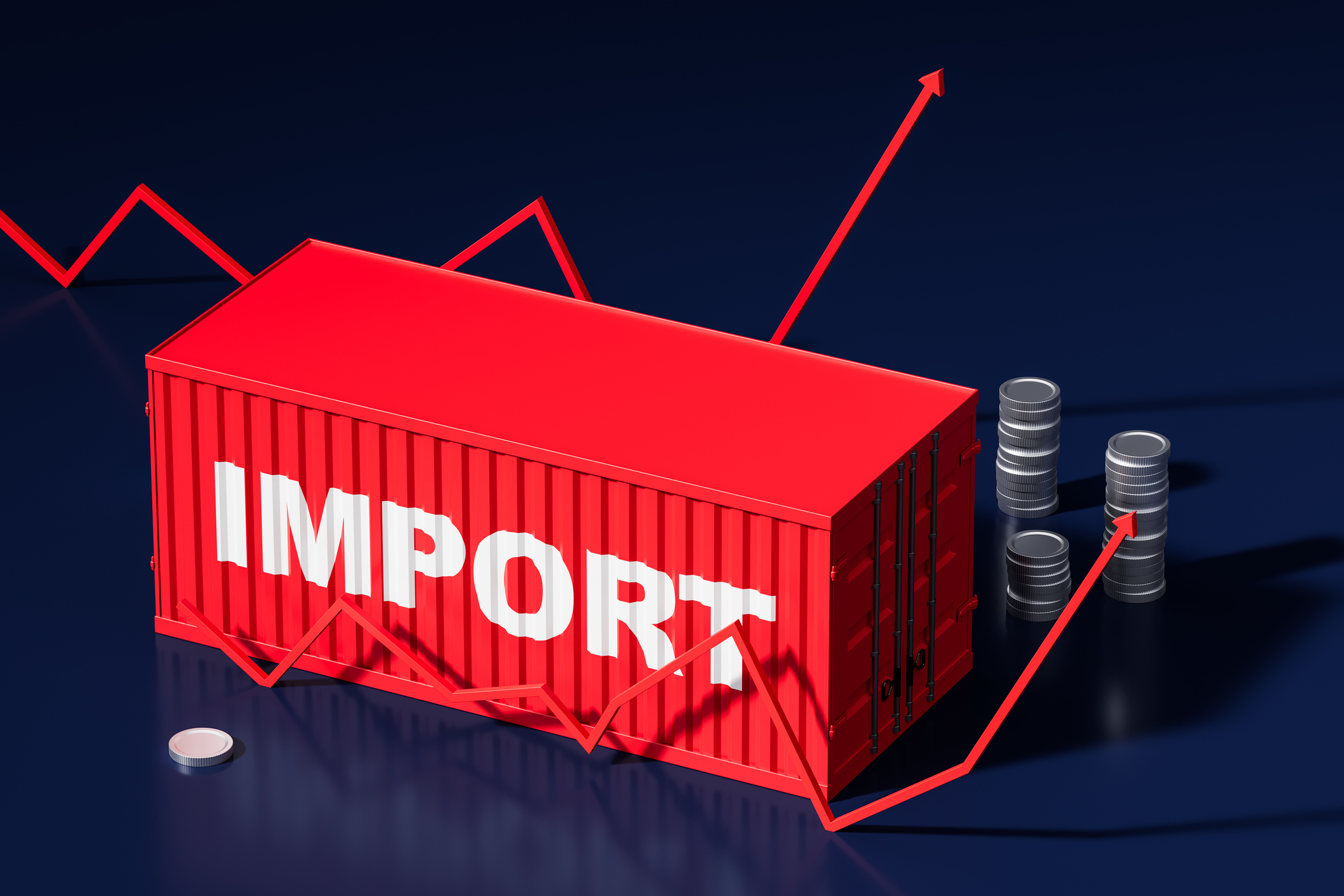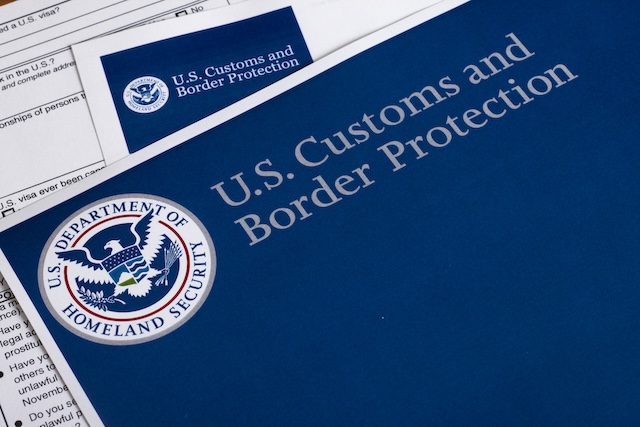- What is duty drawback?
- Why Program Re-Evaluation Is Critical Now
- Common Program Limitations That Reduce Recovery Potential
- Technology Solutions for Enhanced Performance
- Strategic Considerations:
- Performance Metrics That Matter
- Implementation Approach for Maximum Results
- Building Internal Capability and Broker Partnership
- CITTA Brokerage: Your Duty Drawback Optimization Partner
- Take Action on Your Recovery Potential
Countless organizations leave millions in duty recoveries unclaimed. If you haven’t evaluated your duty drawback strategy recently—or haven’t explored this opportunity at all—you’re likely missing substantial cash flow improvements that could significantly impact your bottom line.
What is duty drawback?
It’s a method of recovering tariff-imposed duties, taxes, and fees paid on imported goods that subsequently leave the U.S. through export or destruction. Companies can recover up to 99% of these costs, yet most established programs capture only a fraction of their potential recoveries.
Through years of advising companies on international trade optimization, the evidence is clear: there are substantial opportunities being overlooked, especially now that drawback-eligible tariffs apply to such a wide variety of goods entering the country from nearly every nation on earth.
Understanding the Three Types of Duty Drawback
Our analysis of hundreds of duty drawback programs has revealed that companies often don’t fully leverage all available drawback categories. There are three distinct types of duty drawback, each with its own requirements and opportunities:
Unused Merchandise Drawback: Covers products exported in the same condition as imported, without substantial transformation.
Manufacturing Drawback: Applies when imported materials become part of exported finished products or when imported merchandise is used in manufacturing.
Rejected Merchandise Drawback: Addresses goods that fail specifications and are returned or destroyed under CBP supervision (though this supervision is typically waived in favor of authorized third-party witnessing).
Each category requires specific documentation protocols that companies must establish and maintain for optimal recovery.
Why Program Re-Evaluation Is Critical Now
Market dynamics have shifted dramatically in the wake of the U.S. trade war. While the 2018 Section 301 tariffs on goods from China prompted many companies to establish drawback programs, duty drawback is now available for duties paid on goods entering the U.S. from over 90 countries worldwide.
Common Discovery: If you have a duty drawback program in place, chances are it’s been optimized to target goods from China—a nation whose tariff burden has been among the highest worldwide. But what about the goods you’re sourcing from other countries? Due to significant opportunities emerging from recent trade policy developments, free trade agreement modifications, and global supply chain restructuring, it’s wise to ensure your program covers all recoverable duties, not just those on goods from China.
In addition, operational changes such as new product lines, expanded customer bases, or modified export destinations might have opened up previously unavailable recovery opportunities.
Finally, advances in data analytics and customs compliance technology now enable identification and substantiation of claims that were previously difficult to track. At CITTA, we’re exceptionally skilled at obtaining the necessary documentation regardless of the systems our clients use, so we can work effectively with nearly any data environment.
Modern systems can significantly improve efficiency and reduce costs in several ways:
- Increased broker willingness: Many customs brokerages prefer clients with sophisticated data systems and may decline to work with companies using manual processes. Some brokers may even claim drawback is “impossible” based on limited data availability, even when recovery opportunities exist.
- Comprehensive claiming: Better systems make it easier to claim on every available import rather than just the most obvious ones, maximizing your recovery potential. At CITTA, we’re very good at getting the necessary documentation regardless of the system our clients use.
- Lower administrative costs: Streamlined data can result in lower brokerage commissions since less manual work is required.
- Faster payment: Efficient and organized documentation processes help accelerate claim reviews and payments.
Common Program Limitations That Reduce Recovery Potential
Program audits consistently reveal three critical oversights:
Incomplete Product Mapping
Companies regularly overlook qualifying imported components—packaging materials, processing aids, secondary raw materials—when focusing solely on primary inputs. A comprehensive mapping process examines your entire supply chain to identify all eligible imports, including those that might seem tangential to your core manufacturing process.
Geographical Scope Restrictions
Companies often limit programs to specific facilities without recognizing enterprise-wide opportunities. Organizations with multiple manufacturing locations or contract manufacturing relationships frequently have unexplored recoveries across their operations. Your drawback program should encompass all locations where eligible activities occur.
Documentation Deficiencies
While companies maintain adequate records for current claims, they often lack comprehensive systems necessary to identify additional opportunities or streamline submissions. Enhanced documentation protocols—backed by both technology and the expertise of professionals who ensure accuracy and context—can dramatically reduce processing time while increasing claim accuracy.
Technology Solutions for Enhanced Performance
Advanced ERP integrations can automatically track imported goods through complex manufacturing processes, identifying opportunities that manual systems may miss entirely. Automated data integration capabilities connect import records, manufacturing systems, and export documentation, creating CBP-compliant audit trails while minimizing administrative burden.
Enhanced Analytics Benefits:
- Model different drawback scenarios to inform strategic decisions
- Optimize supply chain decisions for maximum duty recovery
- Identify trade data patterns revealing previously unrecognized opportunities
- Support continuous improvement in program performance
Strategic Integration Opportunities
Effective duty drawback program enhancements extend beyond compliance to encompass strategic supply chain optimization. Integration with broader trade compliance initiatives, foreign trade zone strategies, and supply chain management objectives maximizes overall trade benefits.
Strategic Considerations:
- Align program scope with business growth plans and expansion strategies
- Structure programs to accommodate new export markets, product lines, or manufacturing processes
- Establish documentation practices and internal controls that protect against penalties
Performance Metrics That Matter
Program effectiveness should be measured through comprehensive metrics beyond simple recovery amounts:
Key Performance Indicators:
- Recovery capture rate: Percentage of eligible transactions actually claimed
- Administrative cost ratios: Cost to recover each dollar of duty recovery
- Claim processing timeframes: Time from identification to payment
- Recovery rate trends: Year-over-year improvement patterns
- Compliance accuracy metrics: Claim acceptance rates and audit outcomes
- Program coverage: Percentage of import categories included in your program
Regular benchmarking against your own historical performance reveals improvement opportunities and helps establish realistic targets. Programs should be designed for scalability and adaptability, ensuring they grow with your business and adapt to changing trade conditions.
Implementation Approach for Maximum Results
Successful duty drawback enhancements follow a phased methodology:
Phase 1: Comprehensive Opportunity Assessment
Conduct a thorough analysis to identify all potential recovery opportunities across operations, including overlooked categories and geographic locations.
Phase 2: Documentation System Improvements
Implement technology solutions and processes that capture required data automatically and maintain CBP-compliant audit trails while also backed by the expertise of professionals who ensure accuracy and context.
Phase 3: Process Optimization
Streamline claim preparation and submission processes while ensuring accuracy and compliance with current CBP requirements.
Phase 4: Ongoing Performance Monitoring
Establish metrics tracking and regular program evaluation to maintain optimal performance and identify emerging opportunities.
Throughout implementation, prioritize initiatives based on potential recovery amounts, implementation complexity, and available resources.
Building Internal Capability and Broker Partnership
Successful programs require collaboration between your internal teams and experienced drawback professionals. The right customs broker doesn’t just process claims—they become a strategic partner in building your organization’s duty drawback capabilities.
Why the Right Broker Matters:
Duty drawback requires significant cooperation between your company and your broker. An experienced broker will work alongside your team to:
- Train key personnel on technical requirements and strategic implications
- Develop opportunity identification skills that help your team spot new recovery possibilities as your business evolves
- Create documentation systems that integrate seamlessly with your existing workflows
- Build sustainable processes that deliver long-term value with minimal ongoing disruption
This knowledge transfer approach ensures your program succeeds not just initially, but continues to perform optimally as your business grows and changes.
Essential Training Components:
- Technical duty drawback requirements and regulatory updates
- Documentation standards and CBP compliance procedures
- Opportunity identification methodologies for various business scenarios
- Compliance risk management and audit preparation
- Performance monitoring and continuous optimization techniques
CITTA Brokerage: Your Duty Drawback Optimization Partner
At CITTA Brokerage, we’ve implemented duty drawback programs that generate millions in recoveries annually. As a customs brokerage focused exclusively on duty drawback, we bring specialized expertise that ensures your program captures maximum eligible recoveries while maintaining full compliance.
Our duty drawback optimization services include:
- Comprehensive opportunity assessment and internal program audits
- Technology integration and automation solutions
- Documentation system design and implementation
- Staff training and capability development
- Ongoing performance monitoring and optimization
- Compliance risk management and audit preparation
We work directly with your teams to identify immediate opportunities and implement sustainable improvements that deliver long-term value—all with no upfront costs. Our contingency-based model means we only succeed when you do.
Take Action on Your Recovery Potential
Don’t leave money on the table. Your duty drawback program likely has substantial untapped potential that strategic optimization can unlock.
Ready to discover what you’re missing? Schedule a discovery call with our drawback experts today. We’ll run a quick analysis of your import and export activity to identify specific opportunities in your supply chain.
Whether you’re operating an established program that needs a fresh evaluation or exploring duty drawback for the first time, we’ll show you exactly where recovery opportunities exist and how to capture them efficiently.
Schedule a call to ensure you’re maximizing your opportunities for drawback.
CITTA Brokerage is a customs brokerage focused exclusively on duty drawback.



